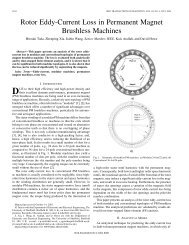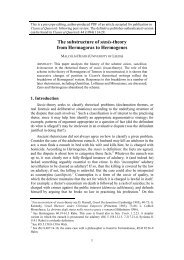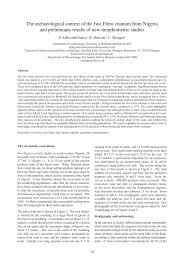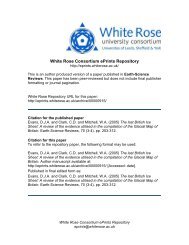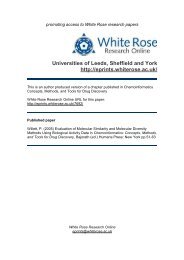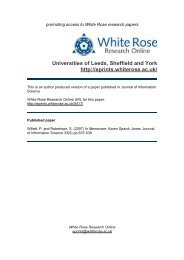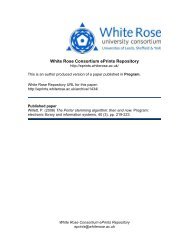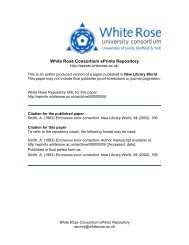Download (3223Kb) - White Rose Research Online
Download (3223Kb) - White Rose Research Online
Download (3223Kb) - White Rose Research Online
Create successful ePaper yourself
Turn your PDF publications into a flip-book with our unique Google optimized e-Paper software.
EXECUTJVE SUMMARY<br />
Introduction Local authorities have a range ofdiscretioniary powers which can he used<br />
in the administration of Housing Benefit This study evaluates authorities<br />
use of discretioiiarv powers in making exceptional hardship payments to<br />
claimants whose Housing Benefit does not cover the i~ostof their rent<br />
(under regulations iii force since January 1996) The main objective of<br />
the research ss’as to investigate how the s~steniof exceptional hardship<br />
payments is operated by local authorities and, in particular, why<br />
expenditure has van~dso significantly between authorities arid, overall,<br />
has been lower than expected<br />
The research methods comprised visits to 18 local rmiithonties during which<br />
face—to—face interviews were coiiduicted with Housing Benefit managers<br />
and assessment stafF and a telephone survey of Housing Benefit managers<br />
in all authorities in Great Britain Successftrl interviews svere conducted<br />
in 305 local authorities, a response rate of 75 per cent<br />
Expenditure on exceptional Each local authority has an allocation of funds from central governnieiit<br />
hardship payments for spending on exceptional hardship payments An authority is also<br />
allowed to spend above this amount up to a ceilrng, the ~perrnitted total<br />
In the first Full year of the exceptiomlal hardship payment scheme (1996/<br />
97) local authorities spent 27 pen cent of the government allocation of<br />
~(18 25 niillrori The results floin the survey suggest that expenditure<br />
increased to around 4S per cent olt}ie government allocation iii 1997/<br />
98 The government funding for exceptional hardship payments was,<br />
therefore still under—spent to a considerable degree, arid overall<br />
e~penid:tiiress as s~elIbelow the aggregate pernurred total’ ofL42 nullion<br />
for all authorities<br />
Nearly a third of the authorities in the suirvey (30 per cent) spent less than<br />
ten per cent of their government allocation iii 1997198 A small number<br />
of authorities (18) reported spendins~nothing All the authorities reporting<br />
expenditure in excess of their government allocation including the two<br />
highest spenders s~’hohad spent o’~ertwice the allocation sveie still within<br />
their permitted totals<br />
Two out olthree Housing Benefit managers thought that their allocation<br />
was about right’, the most common reason being that it wa~e~pected<br />
that demand for exceptional hardship pas~iiientswould increase in future




